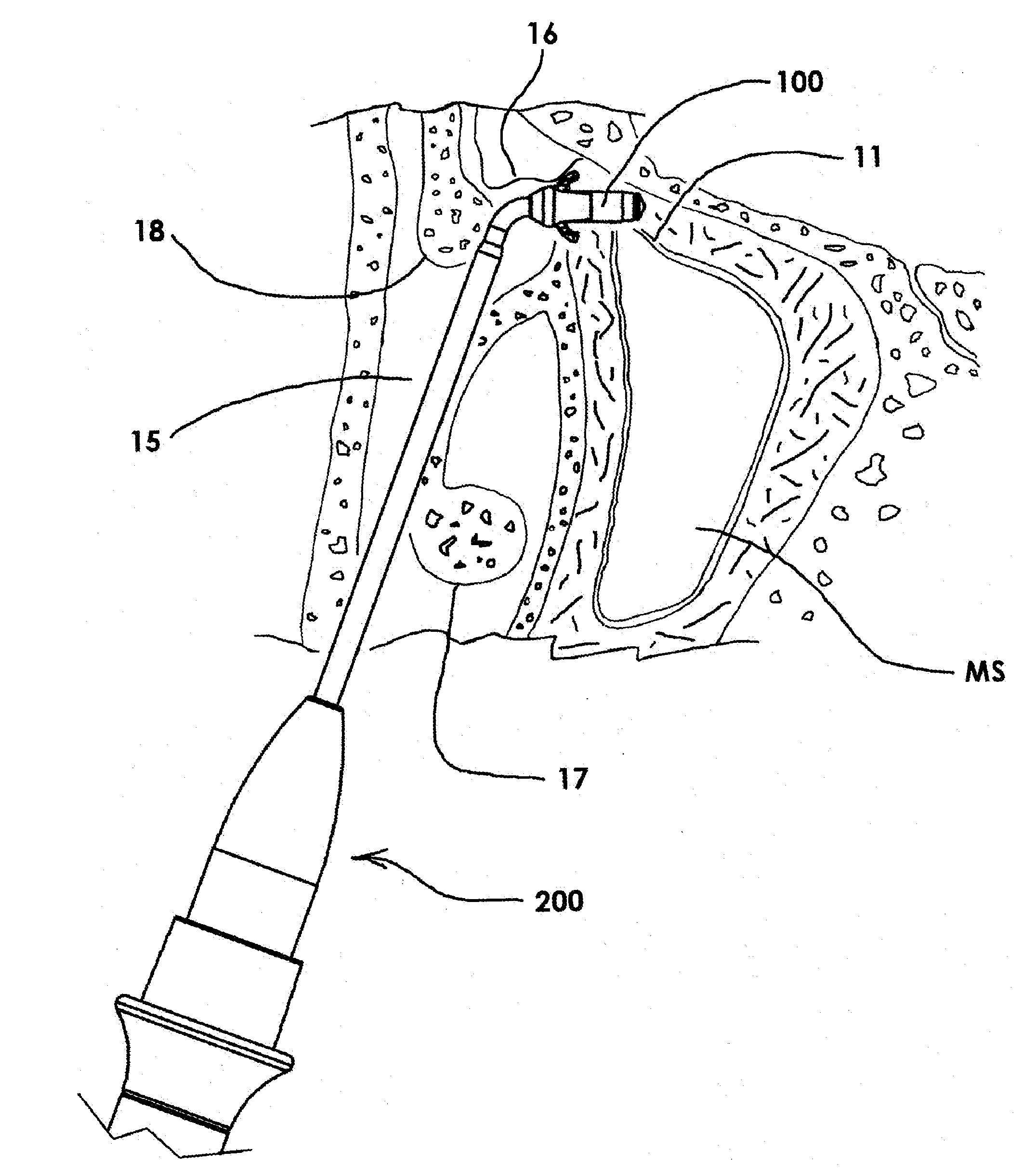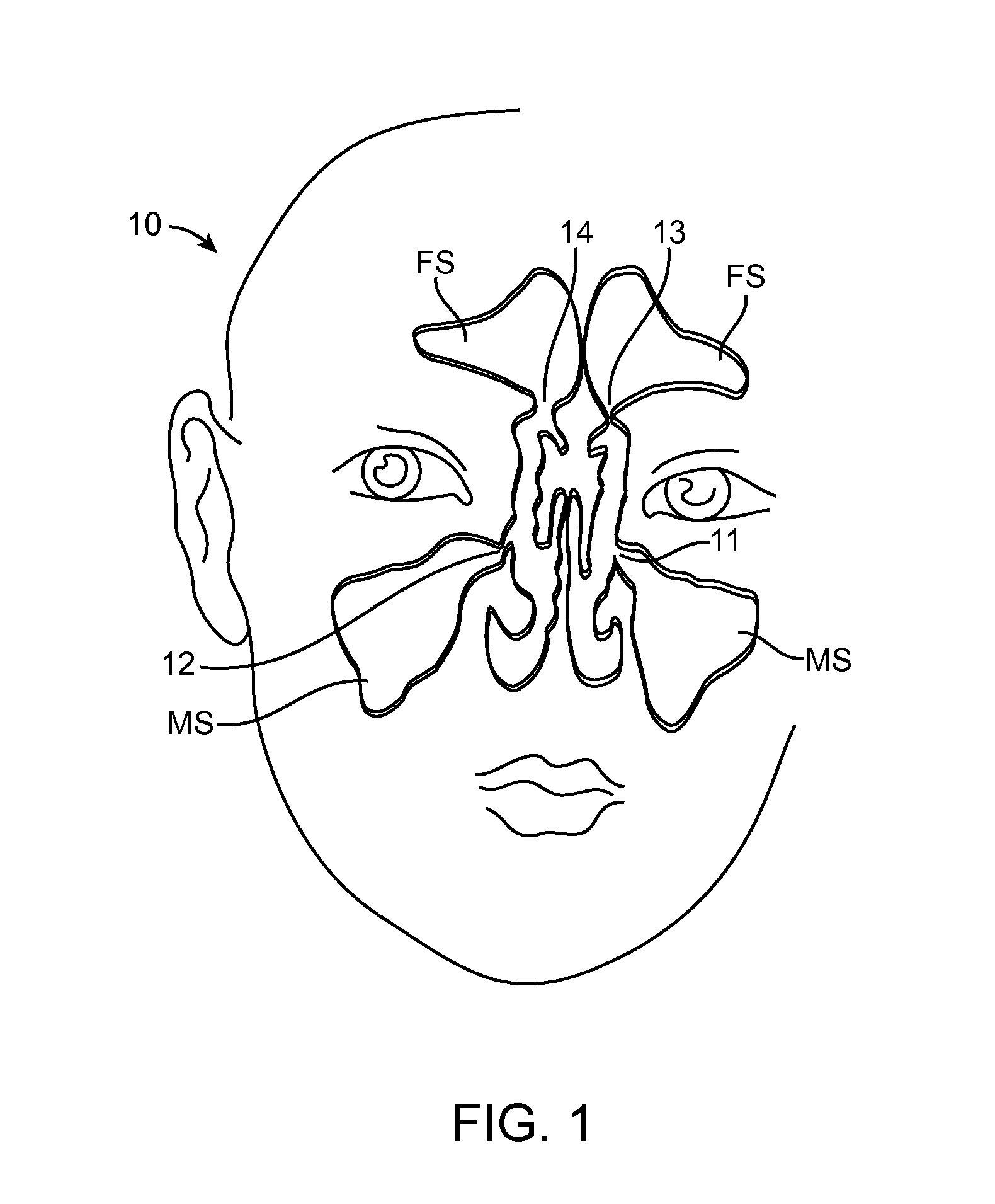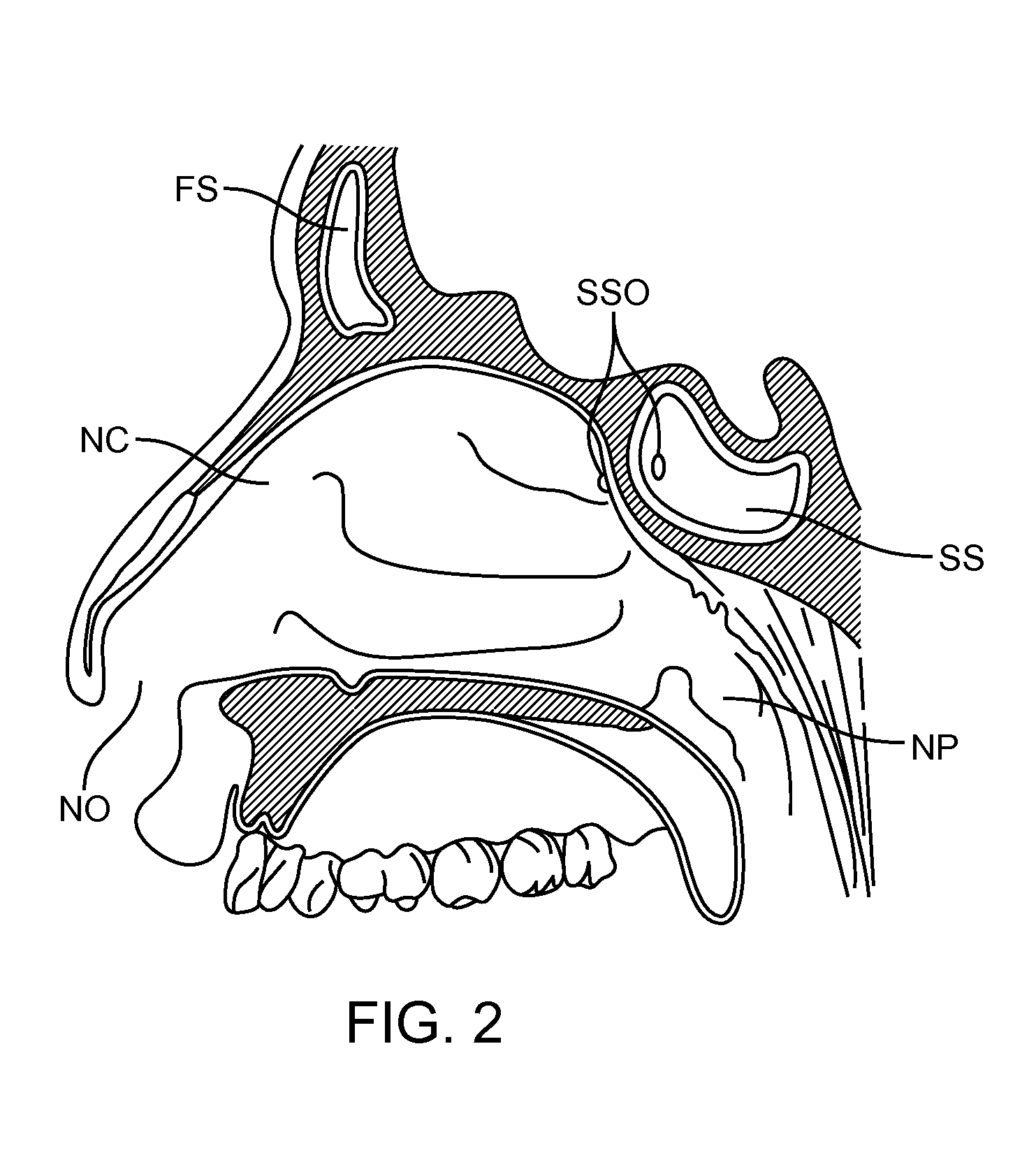Devices and Methods for Dilating a Paranasal Sinus Opening and for Treating Sinusitis
- Summary
- Abstract
- Description
- Claims
- Application Information
AI Technical Summary
Benefits of technology
Problems solved by technology
Method used
Image
Examples
example 1
[0307]A distal osmotic tablet was fabricated according to the procedures described in Example 1 of U.S. patent application Ser. No. 13 / 219,505, filed Aug. 26, 2011, except as follows. First, Polyox 303 was sifted through a 100-mesh sieve. 8.5 grams of minus 100 mesh material was transferred to a beaker. Sodium chloride powder was ground with a pestle in a mortar and sifted through a 100-mesh sieve. 15.0 grams of sized sodium chloride was added to the Polyox. Next, Methocel E5 was sifted through a 100-mesh sieve. 1.25 g of the sized Methocel was added to the Polyox and sodium chloride. The resulting composition was stirred with a spatula to form a homogenous blend. 7 ml of denatured anhydrous ethanol (formula 3A) was slowly stirred into the blend to form a homogenous damp mass. The mass was passed through a 40 mesh sieve with a spatula to form granules. The resulting granules were transferred to a beaker and dried overnight in forced air at 40° C. The dried granules were then sized a...
PUM
 Login to View More
Login to View More Abstract
Description
Claims
Application Information
 Login to View More
Login to View More - R&D
- Intellectual Property
- Life Sciences
- Materials
- Tech Scout
- Unparalleled Data Quality
- Higher Quality Content
- 60% Fewer Hallucinations
Browse by: Latest US Patents, China's latest patents, Technical Efficacy Thesaurus, Application Domain, Technology Topic, Popular Technical Reports.
© 2025 PatSnap. All rights reserved.Legal|Privacy policy|Modern Slavery Act Transparency Statement|Sitemap|About US| Contact US: help@patsnap.com



